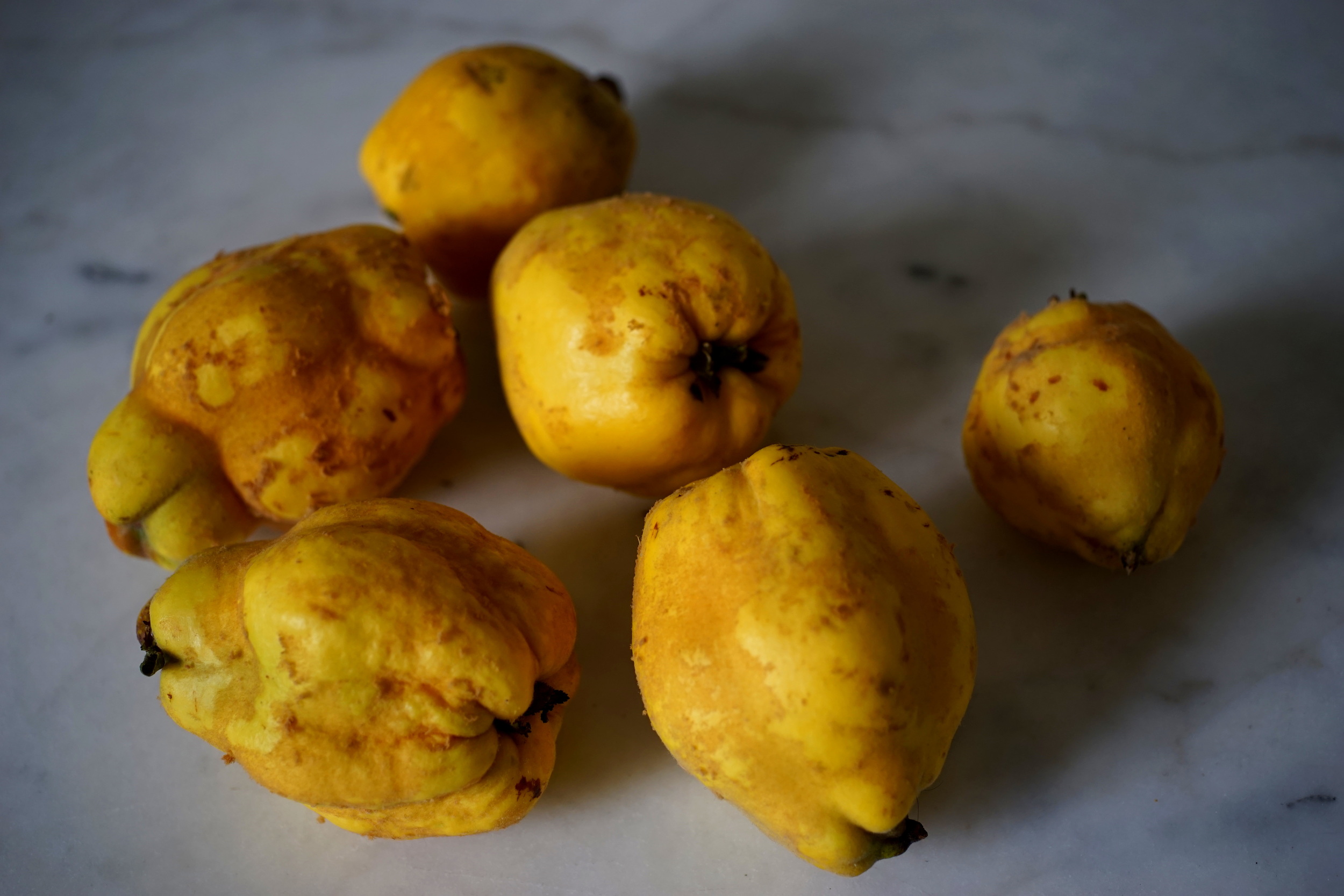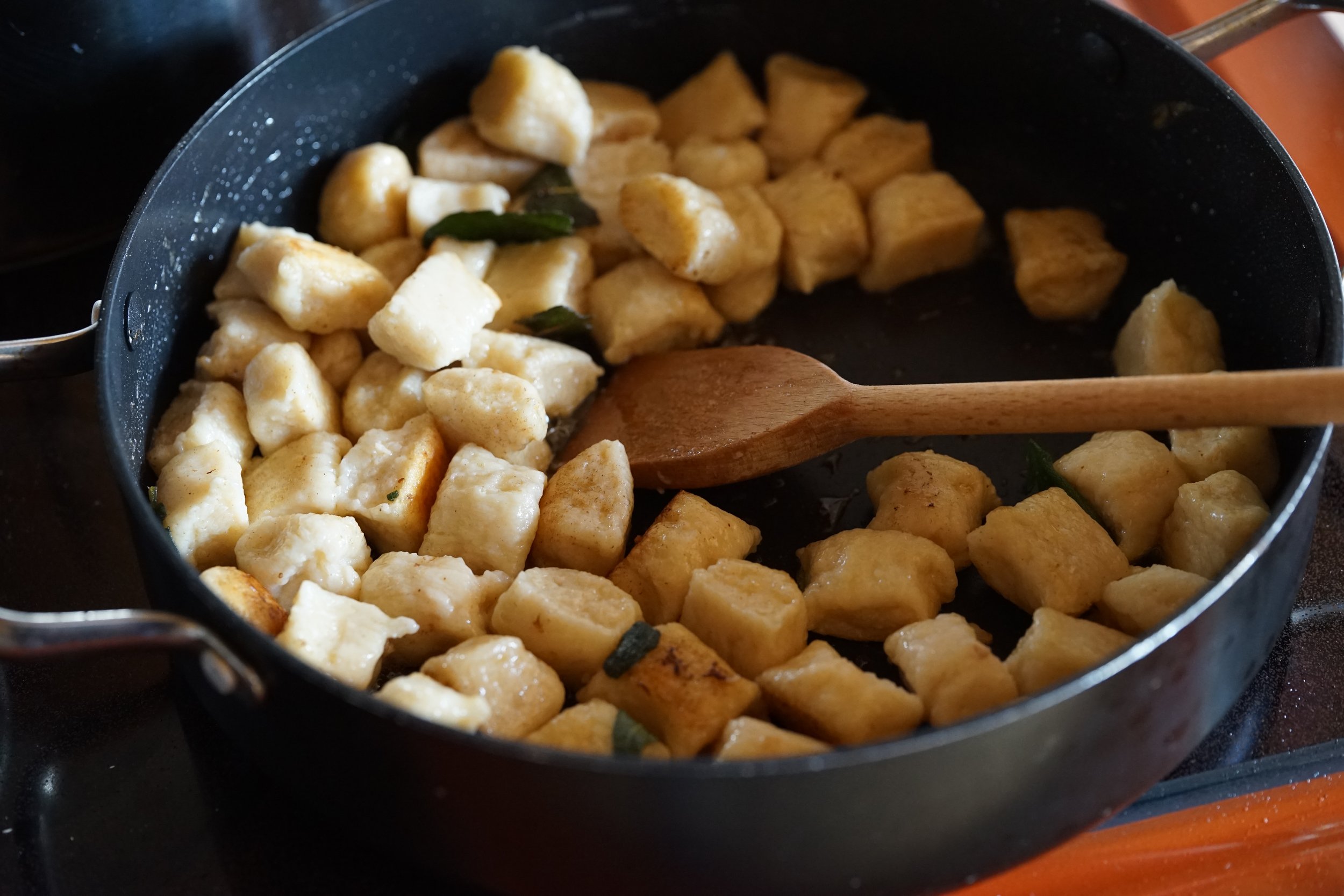Quince Gnocchi
Last week, my lovely friend Annina brought me some quinces. They started out rather furry, but scrubbed up quite nicely.
Quinces always remind me of the bodysuit that Robin Williams wears to become Mrs. Doubtfire.
Quince, a history
The Greeks, and subsequently the Romans, cooked quince with honey, which would then set into a jam. The word marmalade is derived from this, the Greek word melimelon (honey fruit), and later the Portuguese word marmelada (marmelo meaning quince), described a preserve made of quince.
Quince featured prominently in ancient times. The words for quince and apple were synonymous, and in some cases what was translated as apple may have actually been quince. Quince was probably the golden apple that Paris awarded to the most beautiful goddess, Aphrodite, and when the speedy Atalanta tried to outrun her suitors, the golden apples that Hippomenes used to slow her were also probably quinces.
Quince trees grow throughout Europe. In England, they were planted at the Tower of London by Edward I, and even Charlemagne requested that they be planted in his orchards. Today quince is a common choice for jams and jellies, the delicious Spanish membrillo, Italian mostarda, and numerous syrups, spirits and liqueurs.
Although they make great preserves, I was curious to find a recipe for something savoury. I stumbled upon this recipe for quince gnocchi from the Swiss Milk website. The quince replaces the potato, and makes them light, with a slightly acidic flavour. According to the recipe, you could also use applesauce instead of the pureéd quince. I have adjusted the recipe slightly, and it should serve 2-3.
3 quince (to give 200 g purée)
125 g ricotta
50 g hard cheese, grated
1 egg
salt and pepper to taste
1 tsp nutmeg
1 tbsp cornmeal
250 g flour
bunch of sage leaves, roughly chopped
knob of butter
First, you will need to prepare the quince.
Preheat oven to 190 C / 375 F / gas mark 5. Put the whole quinces on a baking sheet and let them cook for an hour, until their skin turns brown and they are squishy to the touch.
Once they have been baked, take them out of the oven and immediately plunge them into a bowl of cold water. Let them sit until they are cool enough to handle. Now peel off the skin and put the soft flesh into a bowl. The original recipe suggests puréeing the flesh, but it should be sufficient to smush it with your fingers or a fork until there are no big lumps or pieces of skin.
Once cool, mix the purée with the ricotta, grated cheese, egg, salt, pepper, and nutmeg. Stir until smooth. Then add the flour and cornmeal, mixing gently. If the dough is really sticky, add a bit more flour, a tablespoon at a time.
Lightly flour the counter and take out a quarter of the dough. Roll this very gently into a long log. Repeat with the remaining dough in three batches. Then cut the logs into gnocchi sized pieces.
Bring a large pot of salted water to a boil. Add the gnocchi. They are cooked when they rise to the surface. Remove with a slotted spoon and shake out the water.
In a large frying pan, heat the butter until spluttering, then add the sage leaves and a sprinkle of salt. Cook until the sage darkens, then add the gnocchi and fry until it crisps up and has a nice golden skin. Serve immediately.
Hard cheese could be Parmesan, Sbrinz, Hobelkäse etc.
The roasted quinces can be a bit difficult to peel. A butter knife can be used to scrape the skin off, if it isn't coming off easily. A bit of skin is ok, especially if you purée it in a food processor afterwards.
Once the dough is formed, be careful not to work it too much.
If you prefer, you can serve the gnocchi after boiling, without frying. Just make the sage butter and pour it over.
You can replace the quince purée with applesauce.

















